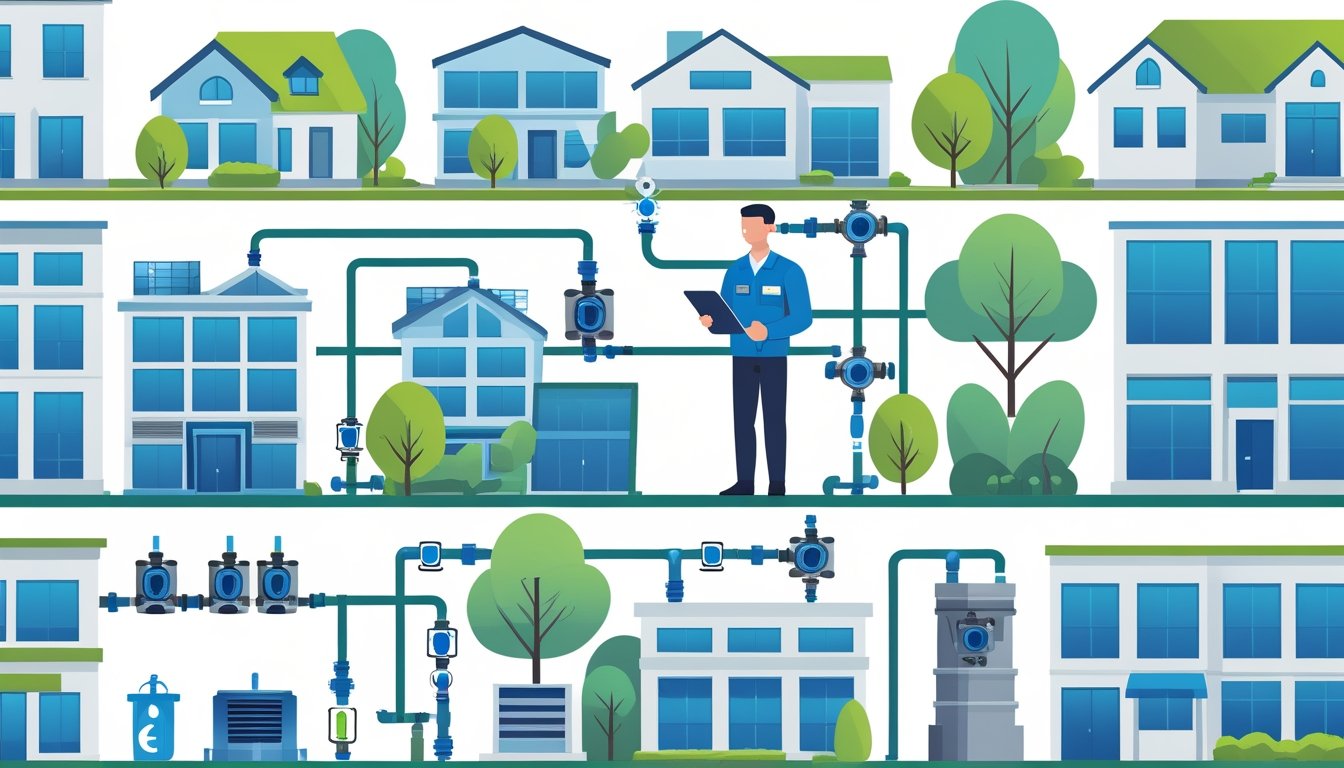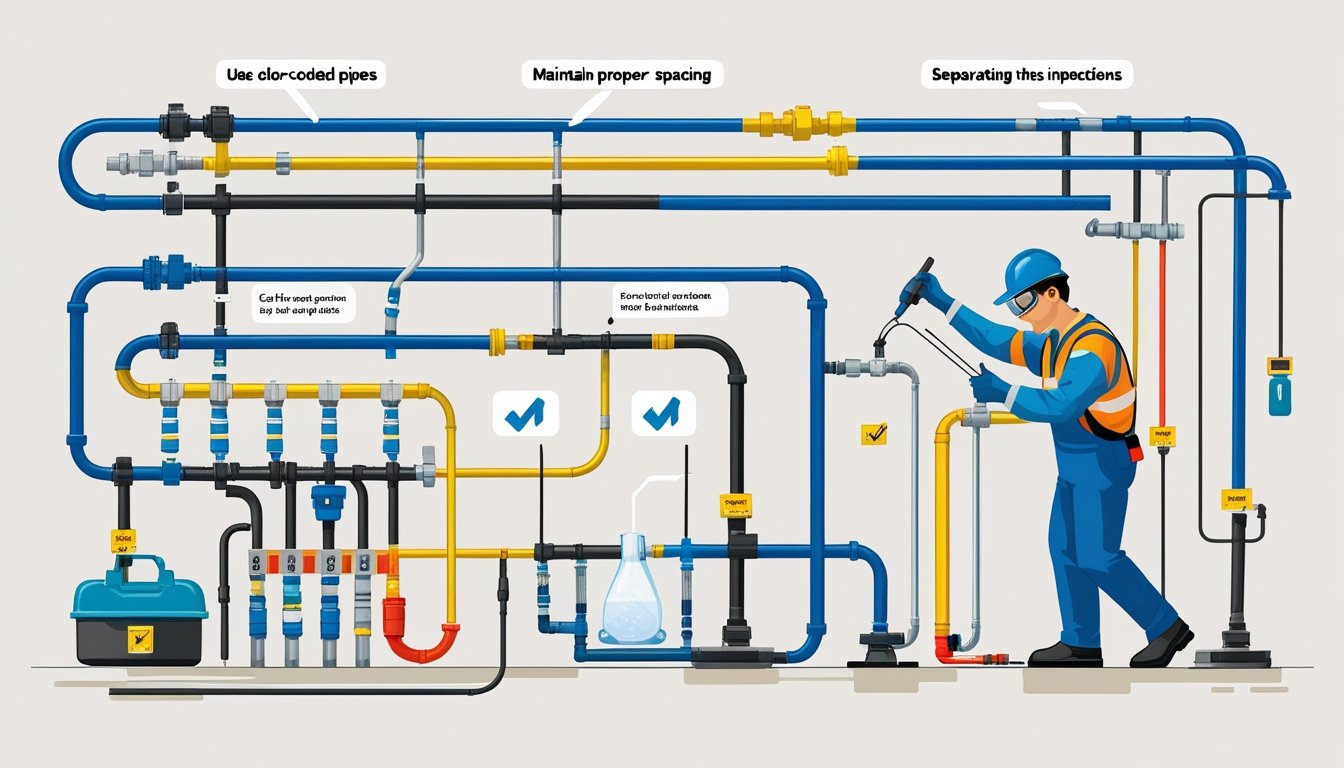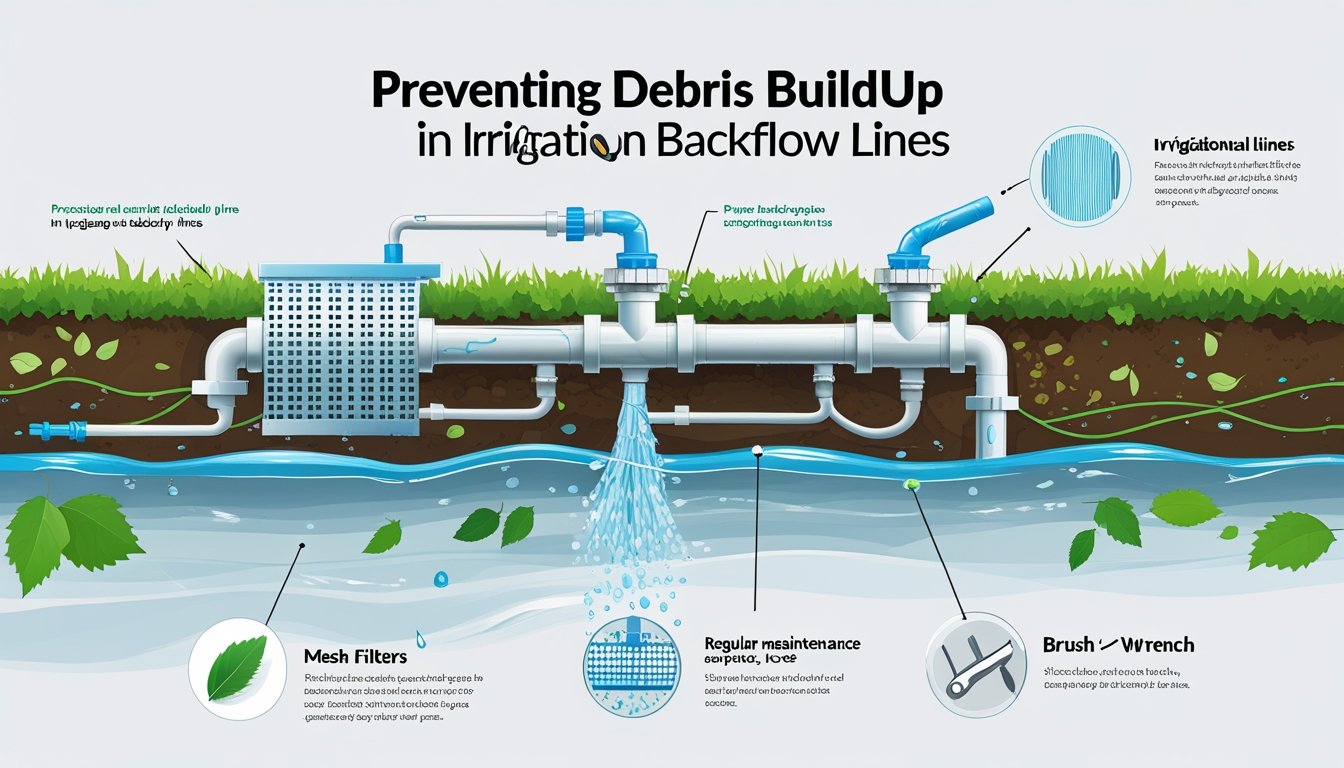A leaking backflow preventer can be a frustrating issue for any property owner. Common causes include debris in the valve, improper installation, or general wear and tear over time. Understanding these factors is essential to addressing the problem effectively and preventing further damage to your water supply.
Addressing a leak promptly is crucial to ensure your system remains compliant with local regulations and protects your community's water quality. If you notice any signs of leakage, reaching out to a qualified service provider can help identify and fix the issue quickly. At Pacific Backflow, we specialize in reliable backflow services that cover testing, repairs, and installations throughout San Diego County.
Don’t wait for a small issue to turn into a costly repair. Regular maintenance and testing of your backflow preventer can help avoid leaks and prolong the life of your system. With nearly half a century of experience, Pacific Backflow is dedicated to keeping your water supply safe and compliant.
Understanding Backflow Preventers
Backflow preventers play a vital role in protecting your water supply. Understanding their functionality and the various types available will help you maintain a safe water system and address any issues that arise effectively.
Functionality of Backflow Preventers
A backflow preventer ensures that water flows in one direction only, preventing contamination from dirty water. It typically employs a check valve, which closes when water pressure drops, stopping any reverse flow.
Other components include the vacuum breaker, which introduces air to prevent siphoning, and the pressure relief valve, designed to release excess pressure to protect the system. Working together, these elements help maintain water quality by ensuring safe flow and preventing leaks. Regular maintenance is critical; malfunctioning parts can lead to a leaky backflow preventer. At Pacific Backflow, we emphasize the importance of testing and servicing these devices to keep your system compliant.
Types of Backflow Preventers
There are several types of backflow preventers, each suited for different applications. The most common include:
- Double Check Valve Assembly: Best for low hazard applications, it consists of two check valves in series to provide redundancy.
- Reduced Pressure Zone Device (RPZ): Ideal for higher-risk situations, it contains a relief valve between two check valves, allowing for pressure drop management.
- Pressure Vacuum Breaker: Suitable for irrigation systems, it allows air into the line to prevent siphoning.
Each type has its unique features, making it essential to choose the right one based on your specific needs. Regular testing and maintenance are crucial, which is why Pacific Backflow offers comprehensive services for all types of backflow preventers to ensure effectiveness and compliance with regulations.
Common Causes of Leaks
A backflow preventer may leak due to several common issues that can arise during regular use. Understanding these causes can help you identify the problem quickly and determine the necessary solutions.
Wear and Tear
As your backflow preventer ages, components may begin to wear down. This degradation can lead to leaks, as seals and diaphragms become less effective over time. Regular use contributes to this wear, especially in high-water flow areas.
You might notice leaks forming around joints or valves. Replacing worn parts can often restore functionality and stop leaks before they worsen. Regular maintenance is key to prolonging the life of your system. At Pacific Backflow, we offer annual testing and inspection services to identify wear and proactively address issues.
Improper Water Pressure
Water pressure that is too high can stress your backflow preventer, causing it to leak. When the pressure from your water supply exceeds the limits of the device, it can lead to failures or leaks. It's essential to monitor your water pressure regularly.
Adjustments may be necessary if you notice significant fluctuations. A pressure relief valve can help regulate excess pressure within the system. If you're experiencing persistent issues, consider consulting a professional like Pacific Backflow for further assistance.
Presence of Debris
Debris accumulation can obstruct the flow within your backflow preventer, leading to leaks. Common culprits include dirt, sand, and other particles that can enter from your water supply. This contamination can affect the diaphragm or other internal components, causing them to malfunction.
A simple flushing of the system may be enough to remove some debris. However, if the problem persists, it could indicate a need for more thorough cleaning or component replacement. Regular maintenance, including testing and inspections, can help prevent debris-related leaks.
Diagnosing the Issue
When dealing with a leaking backflow preventer, a systematic approach helps identify the root cause. Accurate diagnosis involves thorough inspection steps followed by pinpointing where the leak originates.
Inspection Steps
Start by checking the visible components of your backflow preventer. Look for any signs of corrosion, cracks, or loose fittings. Pay attention to the test cocks and relief valves as these areas are often prone to leaks.
Next, ensure that your device is correctly installed and aligned. A misaligned relief valve could lead to leaks. If you notice any water pooling around the fittings or the device, it's essential to take action. Physical inspection can uncover dirt buildup, which may affect the functionality and lead to leaking.
Finally, if necessary, consider utilizing the services of professionals like Pacific Backflow, who can provide expert testing and maintenance.
Identifying the Leak Source
To determine the leak source, isolate sections of the system. This can help you figure out whether the issue resides within the preventer itself or stems from plumbing that feeds into it.
Common culprits include worn-out seals or gaskets. These components can degrade over time and lead to leaks. A faulty diaphragm is another frequent issue that can cause water to drip.
Utilize a simple method: observe where water is escaping. If the leak is consistent even when the system is not under pressure, the cause is likely internal rather than in the connecting pipes.
Once identified, professional intervention can be crucial for effective repair, ensuring compliance with local regulations and maintaining the integrity of your water supply.
Repair and Maintenance Tips
Maintaining your backflow preventer is essential to ensure its efficiency and longevity. Proper repair techniques and consistent maintenance routines can prevent leaks and extend the life of your system.
Using Rebuild Kits
Rebuild kits are an effective solution for addressing leaks in backflow preventers. These kits typically contain all necessary components like rubber gaskets, O-rings, and seals needed for a complete overhaul.
- Identify the Leak Location: Inspect the preventer to determine where the leak is occurring. Common areas include valves and joints.
- Follow Instructions: Each rebuild kit comes with specific instructions. Carefully follow these steps for effective repairs.
- Replace Damaged Parts: Remove old components and install the new parts from the rebuild kit. This process can usually be completed in under an hour.
Using a rebuild kit can save you significant costs compared to replacing the entire unit. For reliable installation, consider seeking help from professionals like Pacific Backflow.
Regular Maintenance Routines
Implementing a regular maintenance routine can significantly reduce the likelihood of leaks. Set a schedule for inspections and testing at least once a year.
- Routine Inspections: Check your backflow preventer for any signs of wear or damage. Pay attention to connections and seals.
- Annual Testing: Engage certified technicians to conduct annual tests. This can help identify potential issues before they become serious problems.
- Cleanliness: Ensure that the area around the preventer is clean and free of debris. This helps in avoiding clogs that may cause leaks.
With consistent upkeep, you can enhance the reliability of your plumbing system. Trust experts like Pacific Backflow to assist you with maintenance solutions tailored to your needs.
Professional Assistance and Resources
When your backflow preventer leaks, seeking professional help can make a significant difference. Reliable resources can guide you through the issues while ensuring compliance with local regulations.
Hiring Verified Experts
Turning to certified professionals is crucial when dealing with backflow preventer leaks. Companies like Pacific Backflow offer services that include testing, repairs, and installations, ensuring that your system is up to code. Experienced technicians provide comprehensive assessments and solutions tailored to your needs.
Consider platforms like JustAnswer, where you can connect with verified experts for informed advice. They often implement a multi-step quality process to guarantee expert-level guidance, which is essential in resolving complex plumbing issues. Hiring knowledgeable professionals not only saves time but also assures you that the work adheres to local regulations.
Utilizing Online Communities
The RV community offers valuable insights for those facing backflow issues. Forums such as IRV2 and various RV community platforms can connect you with other users who may have encountered similar problems. Engaging in these communities allows you to gather practical advice, share experiences, and learn about effective solutions.
For immediate questions, these forums provide a wealth of information from experienced users. Leveraging these resources can complement professional assistance by giving you a better understanding of your unique situation. This approach can help you navigate your choices more effectively during repairs or replacements.
Frequently Asked Questions
When dealing with a leaking backflow preventer, it's essential to understand the potential causes and solutions. Below are some common inquiries regarding leaks and maintenance.
How do I fix a backflow preventer that's leaking from the vent?
If your backflow preventer is leaking from the vent, check for debris or damage in the vent valve itself. Sometimes, simply cleaning or realigning the valve can resolve the issue. If the problem persists, consider contacting a qualified technician for assistance.
What can cause a backflow preventer to leak from the bottom?
Leaks from the bottom of a backflow preventer may stem from worn seals or damaged threads at the connection points. Inspecting the seals and tightening connections can often resolve the issue. Regular maintenance can help prevent these leaks from occurring.
What should be done if a relief valve on a backflow preventer starts leaking?
A leaking relief valve may indicate pressure issues within the system. Check if the pressure is within acceptable ranges. If the relief valve continues to leak, it may need servicing or replacement. Professional assessment can help ensure proper functionality.
What are the reasons for water leaking from the top of a backflow preventer?
Leaks from the top of a backflow preventer typically occur due to loose fittings or a malfunctioning check valve. Inspect these areas carefully to identify and tighten any loose parts. If leaks continue, replacement might be necessary.
How long does a standard backflow preventer last before it may start leaking?
A standard backflow preventer can last anywhere from 5 to 15 years, depending on its usage and maintenance. Regular inspections can extend its lifespan and help avoid unexpected leaks. Ensure you adhere to local regulations and service schedules.
Can a backflow preventer be repaired, and if so, how, when it starts leaking from the weep hole?
When a backflow preventer leaks from the weep hole, it is often repairable. Check for debris or a malfunctioning internal component. Cleaning or replacing worn parts can resolve the issue. Consult professionals if you're unsure about the repairs needed. Pacific Backflow provides reliable service and repairs for backflow preventers to help maintain compliance and functionality in your system.











